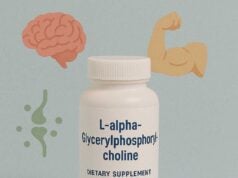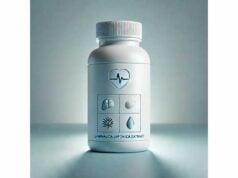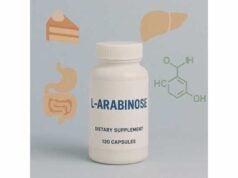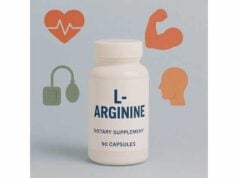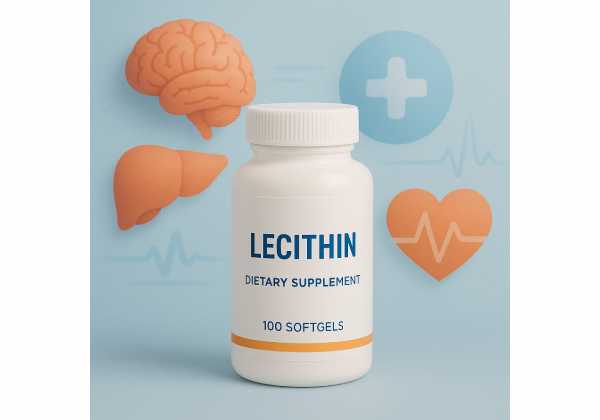
Lecithin is a family of phospholipids best known for their role as natural emulsifiers in foods and supplements. In the body, lecithin provides building blocks for cell membranes, supports the bile that digests fats, and can supply choline—a nutrient vital for liver function, brain development, and nerve signaling. Most commercial lecithin comes from soybeans or sunflower seeds, though egg yolk is a classic source. Beyond the kitchen, lecithin appears in capsules, granules, and liquids marketed for heart, brain, and liver health, as well as in skincare and breastfeeding support. Research is nuanced: some benefits are well established (for example, its use as a safe food additive and choline source), while others depend on dose, product quality, and the person taking it. This guide clarifies what lecithin is, what it can and cannot do, how to use it correctly, and who should avoid it. You will also learn how to read labels, set a sensible dose, reduce side effects, and understand the evidence base behind common claims.
Quick Overview
- May support normal liver fat metabolism by supplying choline (typically 200–600 mg choline/day from lecithin).
- Acts as a gentle emulsifier to aid fat dispersion and may help some people with digestion-related discomfort.
- Typical supplemental amounts: 1,200–3,600 mg lecithin/day (often split), or 5–15 g granules/day.
- Side effects can include nausea or loose stools at higher intakes; avoid if allergic to soy or egg (source dependent).
- People with depression on MAO inhibitors, those with trimethylaminuria, and late-pregnancy users should consult a clinician before use.
Table of Contents
- What is lecithin exactly?
- Does it work and key benefits
- How to choose and use lecithin
- Dosage: how much and when
- Side effects and who should avoid
- Evidence snapshot and FAQs
What is lecithin exactly?
Lecithin is not a single molecule; it is a mixture of phospholipids—the “two-tailed” fats that form the outer layer of every cell. The most abundant component is often phosphatidylcholine (PC), accompanied by phosphatidylinositol (PI), phosphatidylethanolamine (PE), and others. When you see “lecithin” on a label, you are typically getting a standardized blend of these phospholipids plus a small amount of neutral fats and sterols that naturally co-occur in the source material.
Where it comes from.
- Soy lecithin is the most common and cost-effective. Typical PC content ranges roughly from the low teens to the mid-20s by percent, depending on processing.
- Sunflower lecithin has similar phospholipid classes but is valued by those avoiding soy or GM crops.
- Egg lecithin (from yolk) is closer to the composition found in human cell membranes but is less commonly used as a supplement.
What it does in products.
As an emulsifier, lecithin allows oil and water to mix without separating. This property is why it appears in chocolate, dressings, and plant milks, and why it can stabilize lipid formulas in supplements and topical creams. Inside the body, the same amphiphilic (water-and-fat-loving) structure helps form bile micelles that transport fats and fat-soluble vitamins, and it contributes structural material to cell membranes and lipoproteins.
Choline connection.
Phosphatidylcholine provides choline, an essential nutrient needed to synthesize acetylcholine (a neurotransmitter), build new membranes, and move triglycerides out of the liver. Lecithin is not pure choline; rather, it supplies choline in a lipid form. How much choline you obtain depends on the product’s PC percentage and serving size (see Dosage).
Misconceptions to clear up.
- Lecithin is not the same as phosphatidylcholine isolate. PC-enriched products exist and provide more choline per gram.
- Lecithin is not a stimulant, nootropic drug, or weight-loss shortcut. Any benefits are usually modest and support-based.
- Lecithin from soy does not contain meaningful soy protein when purified; however, those with severe soy allergy should still choose sunflower or egg-derived options for safety.
Bottom line.
Think of lecithin as a multi-purpose phospholipid blend with culinary and physiological uses. Its value lies in membrane support, bile function, and choline supply—effects that are steady and background, not dramatic.
Does it work and key benefits
1) Supports healthy liver fat handling (via choline).
Choline deficiency can lead to fat accumulation in the liver. By providing phosphatidylcholine, lecithin contributes choline that the body uses to assemble very-low-density lipoproteins (VLDL), which carry triglycerides away from the liver. People who eat little choline (certain plant-heavy diets without eggs, for example), those with high alcohol intake, and some genetic variants may have higher choline needs. Lecithin can help bridge the gap, though choline-specific supplements may be more efficient gram-for-gram.
2) Aids fat digestion and absorption.
Lecithin’s emulsifying action supports bile in dispersing dietary lipids. Some individuals report less “heavy” post-meal discomfort when lecithin is taken with high-fat foods. In medical nutrition, phospholipids are often used to stabilize lipid emulsions for people with special feeding needs, underscoring lecithin’s compatibility with human fat metabolism.
3) Gentle support for cholesterol balance (indirect).
Phospholipids interact with bile acids and micelle formation, which can influence how cholesterol is transported and reabsorbed. Older nutrition studies using relatively high intakes of lecithin granules reported small improvements in lipid profiles for some participants. Effects are inconsistent and usually modest; lecithin is not a first-line therapy for dyslipidemia.
4) Breastfeeding comfort (plugged-duct prevention).
In lactation practice, lecithin is commonly recommended as an adjunct to help reduce the viscosity (“stickiness”) of milk fat microdroplets, which may lower the chance of recurrent plugged ducts in some breastfeeding parents. This use is supportive and does not replace core measures such as effective milk removal, latch optimization, and rest.
5) Skin barrier and topical uses.
Topically, lecithin helps deliver actives across the skin and can improve the feel of creams and balms. As an amphiphile, it enhances liposome formation, a vehicle used in advanced skincare. When taken orally, any skin benefit is indirect and small; topical use is where lecithin shines.
6) Brain and nerve support (nutrient role).
Because phosphatidylcholine supplies choline, adequate intake supports acetylcholine production and membrane turnover in neurons. People seeking targeted cognitive effects often choose choline donors with higher choline density (such as CDP-choline or alpha-GPC), but lecithin can contribute to overall choline status within a broader nutrition plan.
Who tends to benefit most.
- Those with low dietary choline, limited egg/meat intake, or increased needs (e.g., pregnancy and breastfeeding, per clinician guidance).
- Individuals who prefer a food-derived emulsifier to pair with high-fat meals.
- Breastfeeding parents dealing with recurrent plugged ducts as part of a comprehensive plan advised by a lactation professional.
What it will not do.
It will not meaningfully treat high cholesterol by itself, “detox” the liver, melt body fat, or replace medical care for gallbladder disease, fatty liver, or mastitis. It is a tool—useful, but limited.
How to choose and use lecithin
1) Pick the right source.
- Sunflower lecithin: best for those avoiding soy or GM crops; typically sold as liquid or granules.
- Soy lecithin: widely available, excellent value, often in softgels or granules; choose brands that disclose non-GMO if that matters to you.
- Egg lecithin: niche and pricier; used in specialty products or clinical nutrition.
2) Check phosphatidylcholine (PC) content.
Labels may list “lecithin” per serving without telling you how much is PC. When PC is listed, you can estimate choline contribution more accurately. As a rough guide, 1 g of PC provides ~130 mg of choline. Regular lecithin products vary widely in PC percentage; PC-enriched extracts (sometimes sold as “phosphatidylcholine”) supply more choline per capsule.
3) Choose form and delivery.
- Granules/powders (5–15 g/day): easy to mix into smoothies, yogurt, or oatmeal; economical for higher intakes.
- Softgels (1,200–3,600 mg/day total lecithin): convenient for modest daily use.
- Liquid: useful for culinary emulsions or adding to coffee drinks and dressings.
4) Time it with meals.
Take lecithin with food, especially with meals that contain fat. This timing improves comfort and leverages its emulsifying role.
5) Combine rationally.
- With choline-specific supplements: If you need a precise choline dose, consider CDP-choline or alpha-GPC and use lecithin as a background phospholipid.
- With digestive support: Some pair lecithin with bitters or bile-supporting habits (slow eating, thorough chewing).
- With lactation care: Treat lecithin as one part of a plan that includes latch work, feeding schedule adjustments, and rest.
6) Quality signals on the label.
- Clear source (soy, sunflower, egg).
- Disclosed PC content or third-party testing.
- Allergen info (soy/egg).
- “Non-GMO,” if important to you.
- Absence of unnecessary additives, especially if you are sensitive to flavors or sweeteners.
7) Storage and stability.
Keep granules and liquids in a cool, dry place, tightly sealed; refrigerate liquids if the label suggests. Phospholipids can oxidize; note any off-odors and discard if rancid.
8) Realistic expectations.
Benefits tend to be gradual and supportive. Aim for consistent, meal-time use over several weeks and track the outcome you care about (e.g., digestive comfort, breastfeeding symptom pattern, or meeting daily choline targets).
Dosage: how much and when
Everyday nutrition (general wellness).
- Softgels: A common pattern is 1,200 mg lecithin once or twice daily with meals (total 1,200–2,400 mg/day).
- Granules/powder: 1–2 tablespoons daily (approximately 5–15 g/day) mixed with food or drink. Start at the low end and build up over 1–2 weeks.
Choline targeting.
The Adequate Intake (AI) for choline in adults is often met by diet (eggs, meats, some fish, legumes), but many people fall short. If you want lecithin to contribute choline:
- Choose a product that lists phosphatidylcholine.
- Example: If a serving delivers 3 g lecithin with 20% PC, that’s 600 mg PC, supplying roughly ~80 mg choline. Two such servings would add ~160 mg choline/day toward your total intake.
- Individuals seeking larger choline contributions can either increase lecithin granules (mind GI tolerance) or add a higher-density choline donor.
Breastfeeding (recurrent plugged-duct prevention).
Lactation specialists commonly use 1,200 mg lecithin, 3–4 times per day (total 3,600–4,800 mg/day) and taper once stable. This is an adjunct to thorough milk removal and clinical support, not a stand-alone fix.
Digestive comfort with high-fat meals.
Try 1,200–2,400 mg with a substantial meal and observe your response over 1–2 weeks. Adjust downward if you experience loose stools.
Topical or culinary use.
For dressings, sauces, or frothing “creamer” blends, 1–3% lecithin by weight of the total mixture often achieves stable emulsification. Start low; lecithin can change texture quickly.
When to take it.
Always with food. Spreading doses across meals generally improves comfort and consistency. If sleep is sensitive to supplements, avoid large evening doses until you know how your body responds.
How long to give it.
Allow 2–4 weeks for steady-state effects related to digestion and comfort, and 6–12 weeks if you are monitoring changes in diet-dependent outcomes (e.g., choline intake markers within a broader nutrition plan).
Side effects and who should avoid
Common, usually mild.
- GI effects: nausea, fullness, cramping, or loose stools—more likely above 3–5 g granules/day or when increasing dose too quickly.
- Body odor/sweating/fishy smell: rare; may occur with very high choline intakes. Reducing dose typically resolves it.
- Headache or lightheadedness: uncommon and usually transient when starting or when dosing on an empty stomach.
Allergy considerations.
- Soy lecithin is typically low in residual soy protein, but individuals with severe soy allergy should avoid it or use sunflower lecithin under professional guidance.
- Egg lecithin is not appropriate for those with egg allergy.
Interactions and cautions.
- Depression medications (MAO inhibitors): Theoretical interaction with high choline intake due to neurotransmitter pathways; consult your prescriber.
- Trimethylaminuria (TMAU): Those prone to TMA/TMAO-related odor should avoid high choline loads (lecithin included) unless advised by a specialist.
- Liver or gallbladder disease: Lecithin does not treat these conditions. Seek medical care for pain, fever, jaundice, or sudden digestive changes.
- Anticoagulants/antiplatelets: No strong direct interactions are known for typical lecithin doses, but discuss any new supplement with your clinician if you are on blood thinners.
Pregnancy and breastfeeding.
- Food amounts of lecithin are broadly recognized as safe.
- Supplemental use in pregnancy should be discussed with a clinician, especially late in pregnancy.
- In breastfeeding, lecithin is commonly used for recurrent plugged ducts as part of a care plan; ensure evaluation for latch, feeding patterns, and infection when symptoms arise.
When to stop and seek help.
- New or worsening right-upper-quadrant pain, jaundice, fever, or persistent vomiting.
- Signs of allergic reaction (hives, swelling, wheezing).
- Severe diarrhea or dehydration.
Practical steps to reduce side effects.
- Start low and go slow (e.g., 1,200 mg/day or 1 tsp granules).
- Always take with meals.
- Split the total across 2–3 doses.
- Prefer PC-enriched lecithin if you want choline benefits with less total powder.
Evidence snapshot and FAQs
How strong is the evidence for liver and lipid support?
Lecithin clearly supplies choline, which is essential for liver fat export and membrane integrity. Human nutrition research supports the importance of adequate choline intake. Trials using lecithin granules to affect cholesterol have mixed results—some show small improvements, others show none. Expect supportive, not therapeutic, effects.
What about heart risk and TMAO?
At very high intakes of choline or phosphatidylcholine, some individuals can produce more TMA (trimethylamine) from gut microbes, which the liver converts to TMAO. TMAO has been linked to cardiovascular risk in observational studies and mechanistic work. For typical supplemental amounts in healthy adults, overall risk remains context-dependent. Keeping doses modest, prioritizing whole foods, and maintaining a fiber-rich diet that supports a healthy microbiome are sensible strategies.
Is lecithin safe as a food additive?
Yes. Food-grade lecithins are widely accepted as safe within regulatory limits and have been re-evaluated by food safety authorities. This does not mean unlimited supplemental use is risk-free; it means that the ingredient, as used in foods, has a strong safety record.
Can lecithin help with plugged ducts?
Many lactation professionals recommend lecithin to reduce the recurrence of plugged ducts. The rationale is to decrease milk fat “stickiness” and improve flow. Quality evidence is limited, so it should be combined with clinical assessment, effective milk removal, and rest. If redness, fever, or flu-like symptoms occur, urgent evaluation for mastitis is needed.
Does lecithin improve memory?
As a choline source, lecithin supports normal neurotransmitter synthesis, but studies assessing memory or attention show inconsistent results, especially at typical doses. If cognitive support is your goal, lifestyle factors plus higher-density choline donors under guidance are more likely to help.
How quickly will I notice anything?
For digestion-related comfort, some people notice a difference in days to weeks. For choline status and indirect benefits (e.g., general energy or focus), think weeks to months of steady use alongside a choline-aware diet.
Better soy or sunflower?
Functionally, both work. Pick sunflower if you avoid soy or want a non-GMO default. Choose soy if cost is a priority and allergens are not an issue. The decisive factor is often PC content and dose form you can take consistently.
Granules or softgels?
Granules are more economical for higher daily amounts and can be blended into meals. Softgels are simpler for smaller, steady intakes. Liquids suit culinary uses.
Key takeaways.
Lecithin is a versatile phospholipid blend with a long safety track record in foods. As a supplement, it’s best used to support choline intake, digestion of fat-rich meals, and specific practical needs such as breastfeeding comfort—with realistic expectations and attention to dose, source, and tolerance.
References
- Choline — Health Professional Fact Sheet 2024 (Guideline)
- Re-evaluation of lecithins (E 322) as food additives 2017 (Guideline)
- Academy of Breastfeeding Medicine Clinical Protocol #36: The Mastitis Spectrum, Revised 2022 2022 (Guideline)
- Intestinal microbiota-dependent metabolism of phosphatidylcholine and cardiovascular risk 2013 (RCT/Mechanistic)
Disclaimer
This article provides general information about lecithin and is not a substitute for personalized medical advice, diagnosis, or treatment. Always speak with a qualified healthcare professional about your specific health needs, medications, pregnancy or breastfeeding status, allergies, and before starting any new supplement. If you experience concerning symptoms—such as chest pain, severe abdominal pain, jaundice, high fever, or signs of an allergic reaction—seek medical care immediately.
If you found this guide useful, please consider sharing it on Facebook, X (formerly Twitter), or your preferred platform, and follow us for more evidence-based wellness articles. Your support helps us continue producing high-quality content.

